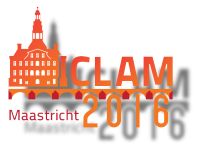You are here
Recent research
Indications of a Scarring Effect of Sickness Absence Periods in a Cohort of Higher Educated Self-Employed
Liesbeth E.C. Wijnvoord ,Sandra Brouwer, Jan Buitenhuis, Jac J.L. vander Klink, Michiel R.de Boer
PLOS ONE May 23 2016,
Abstract
OBJECTIVES
Little is known regarding incidence and recurrence of sickness absence in self-employed. The primary aim of this study was to evaluate the influence of the number of prior episodes of sickness absence on the risk of subsequent periods of sickness absence in higher educated self-employed.
METHODS
In a historic register study based on the files of a Dutch private disability insurance company all sickness absence periods of 30 days or more were analysed.
RESULTS
A total of 15,868 insured persons contributed 141,188 person years to the study. In total, 5608 periods of sickness absence occurred during follow-up. The hazard of experiencing a new period of sickness absence increased with every previous period, ranging from a hazard ratio of 2.83 in case of one previous period of sickness absence to a hazard ratio of 6.72 in case of four previous periods. This effect was found for both men and women and for all diagnostic categories of the first period of sickness absence.
CONCLUSIONS
Our study shows that for all diagnostic categories the hazard of experiencing a recurrence of sickness absence is appreciably higher than for experiencing a first episode. This suggests that this increased hazard may be related to the occurrence of sickness absence itself rather than related to characteristics of the insured person or of the medical condition. These findings could indicate that sickness absence periods may have a scarring effect on the self-employed person experiencing the sickness absence.
The Added Value of Medical Testing in Underwriting Life Insurance
Jan Bronsema, Sandra Brouwer, Michiel R. de Boer, Johan W. Groothoff
PLOS one Published: December 30, 2015 •DOI: 10.1371/journal.pone.0145891
Abstract
BACKGROUND
In present-day life-insurance medical underwriting practice the risk assessment starts with a standard health declaration (SHD). Indication for additional medical screening depends predominantly on age and amount of insured capital. From a medical perspective it is questionable whether there is an association between the level of insured capital and medical risk in terms of mortality. The aim of the study is to examine the prognostic value of parameters from the health declaration and application form on extra mortality based on results from additional medical testing.
METHODS
A history register-based cohort study was conducted including about 15.000 application files accepted between 2007 and 2010. Blood pressure, lipids, cotinine and glucose levels were used as dependent variables in logistic regression models. Resampling validation was applied using 250 bootstrap samples to calculate area under the curves (AUC’s). The AUC was used to discriminate between persons with and without at least 25% extra mortality.
RESULTS
BMI and the overall assessment of the health declaration by an insurance physician or medical underwriter showed the strongest discrimination in multivariable analysis. Including all variables at minimum cut-off levels resulted in an AUC of 0.710 while by using a model with BMI, the assessment of the health declaration and gender, the AUC was 0.708. Including all variables at maximum cut-off levels lead to an AUC of 0.743 while a model with BMI, the assessment of the health declaration and age resulted in an AUC of 0.741.
CONCLUSIONS
The outcome of this study shows that BMI and the overall assessment of the health declaration were the dominant variables to discriminate between applicants for life-insurance with and without at least 25 percent extra mortality. The variable insured capital set by insurers as factor for additional medical testing could not be established in this study population. The indication for additional medical testing at underwriting life-insurance can possibly be done on limited variables instead of the obligatory medical testing based on age and the amount of insured capital.
Predictors of sickness absence in college and university educated self-employed: a historic register study.
Wijnvoord LE1, Van der Klink JJ, De Boer MR, Brouwer S.
BMC Public Health. 2014 May 2;14:420. doi: 10.1186/1471-2458-14-420.
Abstract
BACKGROUND:
Despite a large proportion of the workforce being self-employed, few studies have been conducted on risk factors for sickness absence in this population. The aim of this study is to identify risk factors for future sickness absence in a population of college and university educated self-employed.
METHODS:
In a historic register study based on insurance company files risk factors were identified by means of logistic regression analysis. Data collected at application for private disability insurance from 634 applicants were related to subsequent sickness absence periods of 30 days or more during a follow-up period of 7.95 years. Variables studied were self-reported lifestyle variables, variables concerning medical history and present health conditions and variables derived from the general medical examination including blood tests and urinary analysis.
RESULTS:
Results from analysis of data from 634 applicants for private disability insurance show that previous periods of sickness absence (OR 2.07), female gender (OR 2.04), health complaints listed in the health declaration (OR 1.88), elevated erythrocyte sedimentation rate (ESR) (OR 4.05) and the nature of the profession were related to a higher risk of sickness absence.
CONCLUSIONS:
Sickness absence was found to be related to demographic variables (gender, profession), medical variables (health complaints and erythrocyte sedimentation rate) and to variables with both a medical and a behavioural component (previous sickness absence).
Theme by Danetsoft and Danang Probo Sayekti inspired by Maksimer





